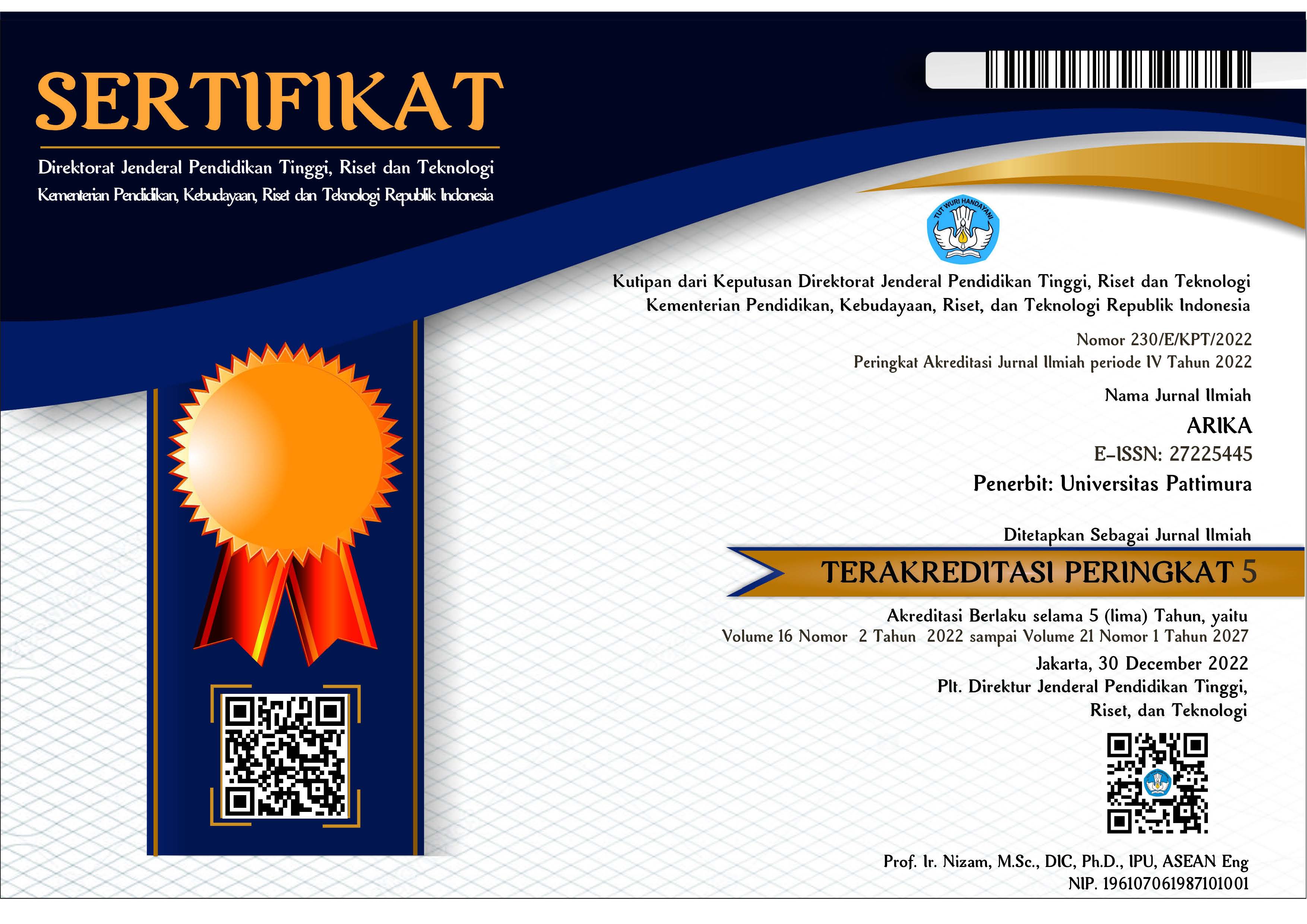Analisis Beban Kerja Ditinjau Dari Faktor Usia Dengan Pendekatan Recommended Weiht Limit ( Studi Kasus Mahasiswa Unpatti Poka)
Keywords:
Workload, age factor, the Recommended Weight Limit
Abstract
Recommended Weight Limit is a condition in which nearly all workers can do the job appointment to normal within a certain time period without incurring the risk of spinal injuries caused by lifting. The purpose of this study was to assess and classify the physical workload based workload increased pulse rate on unskilled labor while doing removal work load, analyze the optimal use of the load based on the approach to the Recommended Weight Limit, and determine the influence of heavy workloads in accordance with the criteria Lifting index. Calculations based on the physiological approach performed in a subjective order to obtain the lifting of activities for the whole treatment in the category of mild working conditions, and based on the Recommended Weight lifting load limit is obtained optimal for untrained workers with 19-24 years of age based on multiplier factor of the distance measurement position of the hand holding horizontal load (H), vertical distance of the hand holding the position of the load on the floor (V), the distance moved by the load vertically between the place of origin to destination (D), the angle of rotation symmetry is formed between the hands and feet (a), Frequency multiplier (F) with the duration of the appointment of> 1 hour can handle load of 22 kg. Based on Lifting Index for unskilled labor is obtained that the work load of 15 kg, 20 kg and was not identified at risk of injury to the spine because the value of LI> 1, but for the work load of 25 kg identified the risk of spinal injury to workers are not trained as LI values <1.Downloads
Download data is not yet available.
Published
2011-09-09
How to Cite
Soleman, A. (2011). Analisis Beban Kerja Ditinjau Dari Faktor Usia Dengan Pendekatan Recommended Weiht Limit ( Studi Kasus Mahasiswa Unpatti Poka). ARIKA, 5(2), 83-98. Retrieved from https://ojs3.unpatti.ac.id/index.php/arika/article/view/487
Issue
Section
Articles
An author who publishes in the ARIKA Jurnal agrees to the following terms:
- The author retains the copyright and grants ARIKA journal the right of first publication of the work simultaneously licensed under the Creative Commons Attribution-ShareAlike 4.0 License that allows others to share the work with an acknowledgment of the work's authorship and initial publication in this journal.
- The author is able to enter into separate, additional contractual arrangements for the non-exclusive distribution of the journal's published version of the work (e.g., post it to an institutional repository or publish it in a book) with the acknowledgment of its initial publication in this journal.
- The author is permitted and encouraged to post his/her work online (e.g., in institutional repositories or on their website) prior to and during the submission process, as it can lead to productive exchanges, as well as earlier and greater citation of the published work (See The Effect of Open Access).










